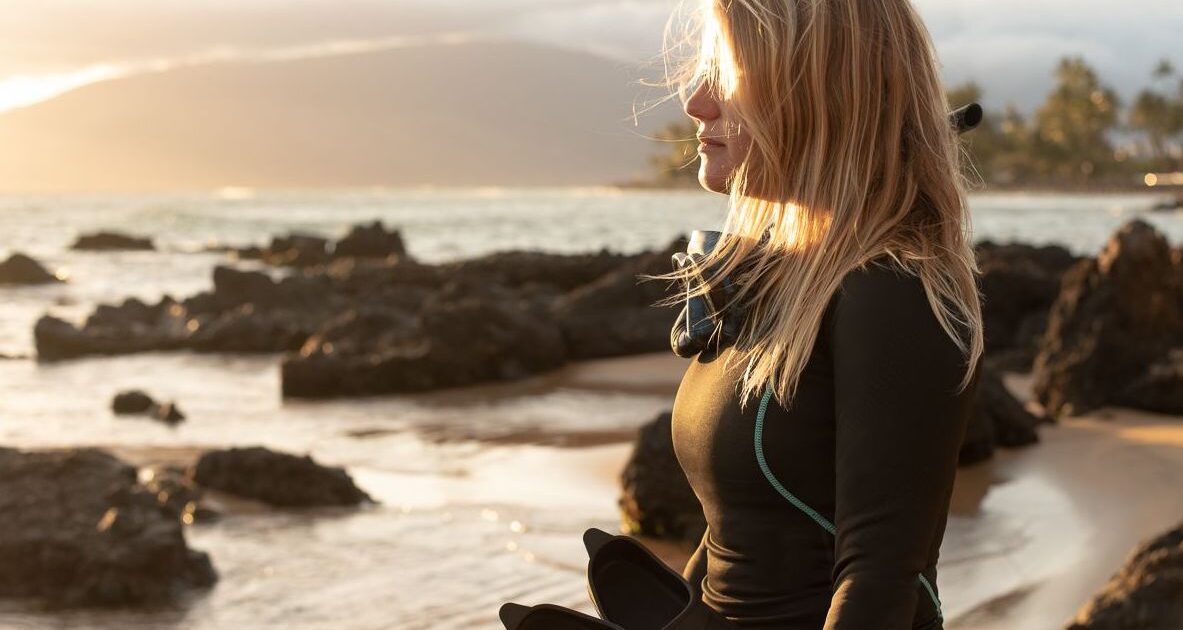It’s an old moniker in diving: women-specific suits just “shrink it, and pink it.”
The cliche arose—fairly—from decades of men’s-first design teams making suits for men and then chiefly adopting the same cut, shape and design for their female equivalents. Oftentimes, no changes were made to the women’s versions—other than superficial size lowerings and a generic afterthought color switch.
For years, little attention was paid to the specific needs of a women’s-centric design and the varying shapes of women’s bodies as compared to those of men. The result? Generations of women were stuck diving in ill-fitting suits that didn’t hug their contours, support their dynamic movements and forced them to adopt superficial “feminine” colorways that were mere window dressing on a piece of, let’s be honest, sub-par dive gear.
Recently, during an episode of the Decompression Hour that was tackling the topic of comfortable diving, a viewer lamented the age old lack of focus on women’s-first design and elevated the classic “shrink it and pink it” cliche.
Fortunately, Wendy Jinkerson, BARE designer and Product Development Team Lead in Burnaby, British Columbia, was on the FB Live panel and was able to attest to the huge amount of progress that has been made.
She agreed that historically the dive industry has done a poor job of designing and building women’s-specific suits. But BARE has grown into a powerhouse of design innovation and conceptualization that specifically targets the female demographic, from the drawing board all the way through the manufacturing process.
Now, BARE does the exact opposite of “shrink it and pink it.”
Coming from a background in fashion design, while creating immersion gear, Wendy builds on years of experience designing and patternmaking technical apparel like wetsuits, drysuits, PFDs and accessories. Seeking out new materials, technologies and innovations for BARE is her favorite part of the job—especially when she’s creating something that feels great and helps women perform at their highest level. She knows a thing or two about what goes into a great wetsuit or drysuit.
“We don’t take the men’s and just shrink it down,” Jinkerson said as she followed up on the viewer’s comment. “We have many different sizes we offer in the women’s suits because we’ve found that women’s body shapes and types have so many variations—definitely more than men.”
When cutting women’s-specific suits, the design team in Burnaby creates a different pattern block for each that’s entirely different from its male counterpart. The male and female versions might have the same basic design principles built into each, but beyond that, the cuts are completely different. “It’s a totally different pattern block that we start with for the women’s suits,” Jinkerson confirmed.
“There’re so many different body types,” She continues. “You know, we have to make sure we design the suits so we can accommodate different body types. We have lots of different sizes—in wetsuits also—and then, as far as the visual design goes, we have a lot of fun with that, too.”











